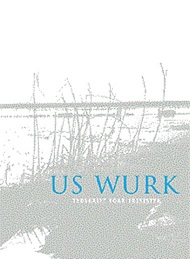Taalkundige skaaimerken fan normearre Frysk
Samenvatting
In this study I investigate to what extent present-day spoken and written Frisian has been standardized. I make use of general linguistic features of standardization, concentrating on criteria of form, on codification and especially on the choice of dialect. My findings are based on existing literature on the subject as well as on research (especially into dictionary material). When one considers the number of users the position of Frisian as a spoken language is relatively strong whereas its position as a written language must be classified as downright weak. Because of the fact that "every" speaker of Frisian has an (active) command of Dutch, Frisian should not be regarded in isolation, but must also be viewed in relation to the dominant Dutch language. It is therefore advisable to compare the findings with the criteria that apply to Standard Dutch. The latter can among other things be characterized as [-dialectical] and neutral with regard to the spoken as well as to the written language. It appears that in written Frisian there is a super-dialectical feature that precedes the general criteria, namely the aspect of dissociation from Dutch. Through this aspect,
which manifests itself in the lexicon and on every grammatical level, written Frisian is immediately recognizable as such. Only when dissociation is not at issue choice of dialect can be shown; again first of all in the written language. In that case there is a choice between two of the three main dialects: Clay-Frisian and Wood-Frisian; the third, that of the Southern Corner, does not feature because in some important aspects it resembles Dutch too closely. When there is a possibility to choose, the choice is closely connected to the position the forms concerned have within the language, especially frequency and systematics (not counting dissociation for the moment). Very often the choice falls on Clay-Frisian, the dialect that is least marked and which has the largest distribution. The written language is, also to a certain extent, codified: the spelling has been laid down; in some cases a choice is made from the variety of dialect forms but in many other cases more than one form is allowed, sometimes with hierarchical differences.
Spoken Frisian in its most common form must be characterized as [+dialectical]:
almost every speaker uses his own dialect, even in contacts with speakers of the other main dialects. There is no need for adjustments in order to be understood as the (mainly phonologieal) differences between the three main dialects are relatively small and hardly ever give rise to misunderstandings. Furthermore the influence of interferences from Dutch (once again a super-dialectical feature) is very great. There is a very small, not very influential, group of consciously Frisian speaking people who speak a kind of super-dialectical language with as few interferences from Dutch as possible, a variant that is essentially based on the written language and that should not be regarded as a living sociolect within the community. The concrete linguistic forms of both the more or less standardized written Frisian and the nonstandardized "common" spoken Frisian have been remarkably strongly influenced by an external factor: Dutch.

